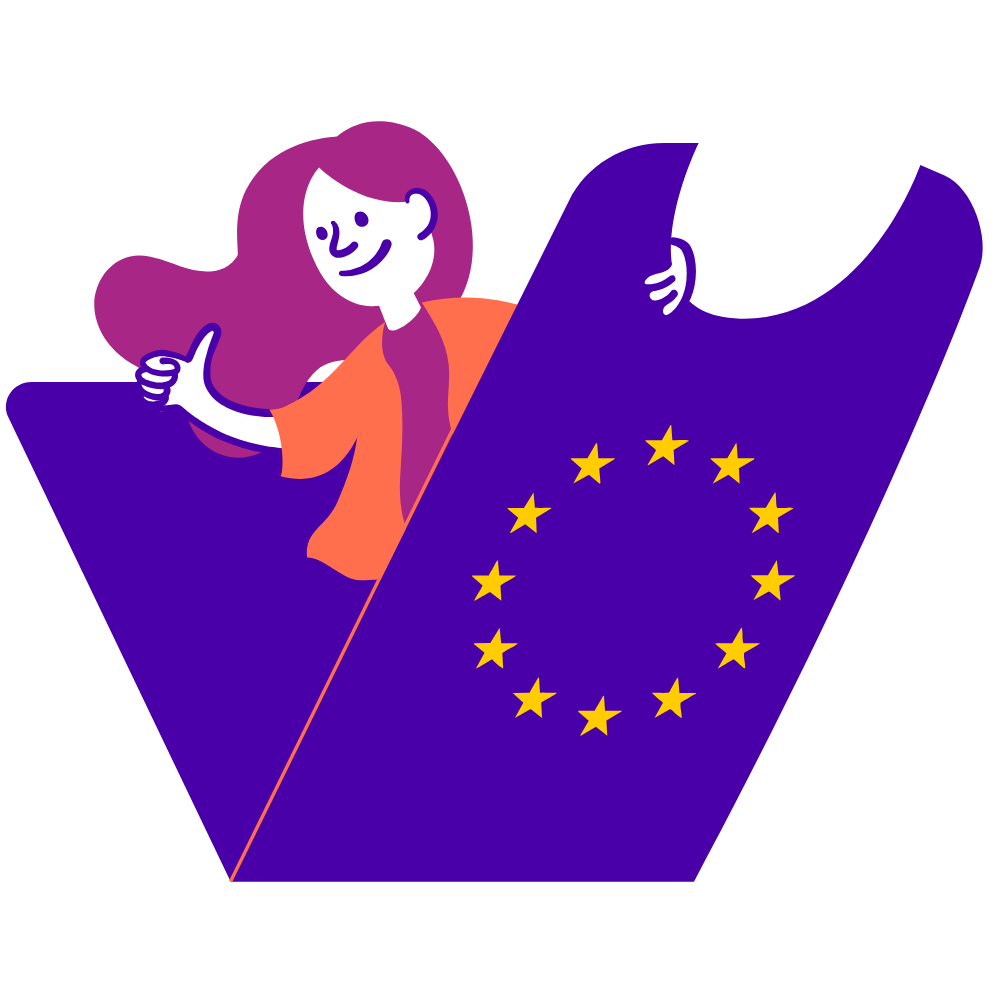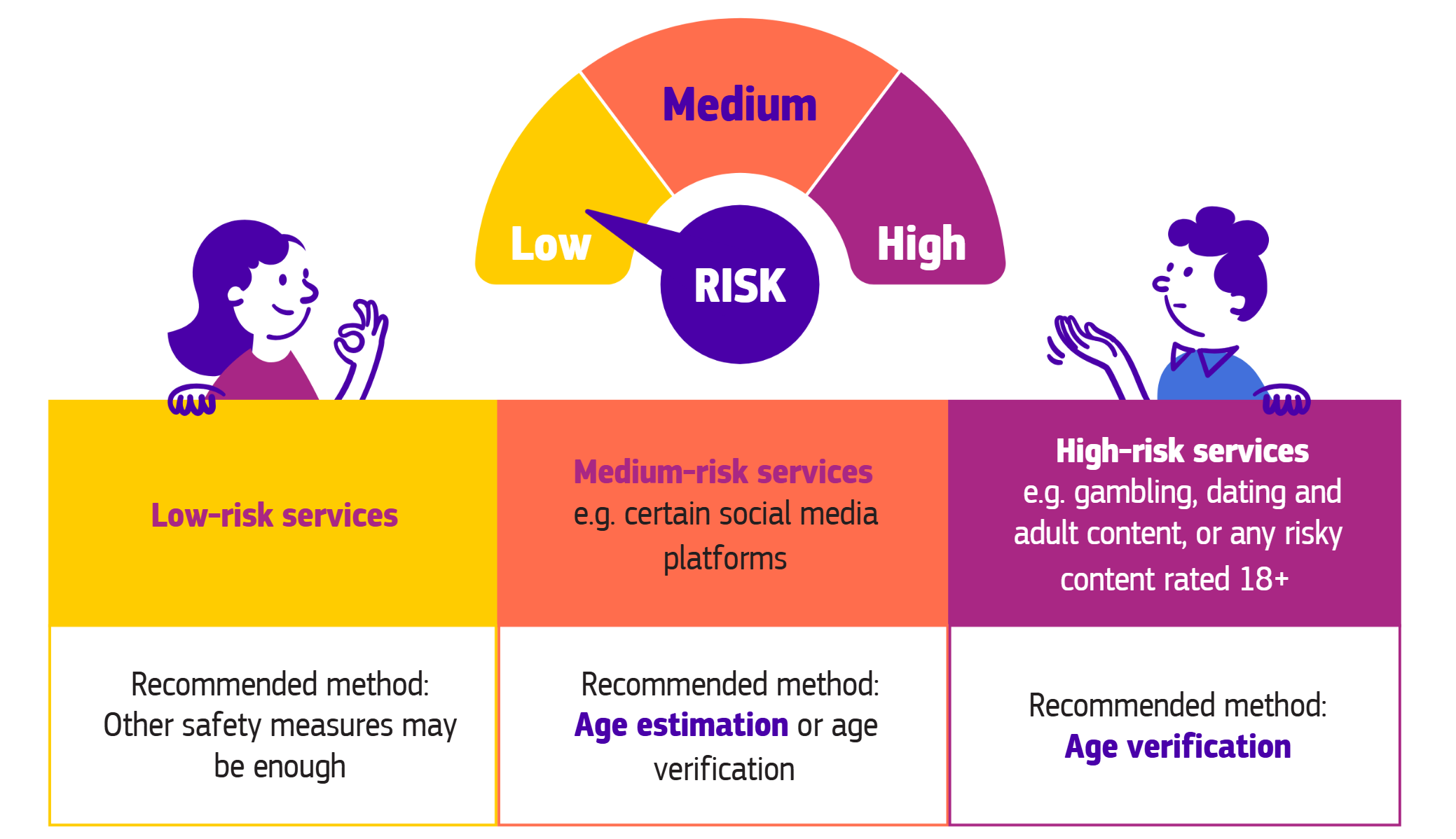
To make platforms safer – and to prevent kids and teens from using services that are not meant for them – it’s important to know whether users are old enough to access certain content.
This is where age assurance comes in.
Age assurance means using tools or checks to:
 | find out or estimate a user’s age, or |
 | confirm whether someone is above or below a certain age. |
Did you know? You have to be at least 13 years old to use TikTok, Snapchat, Instagram, BeReal and Steam!
Types of age assurance
There are three main ways platforms can check a user’s age:
Self-declaration
You enter your birth date, or click “Yes, I’m over 13” or “Yes, I’m over 18”. It’s quick, but easy to cheat, so it’s not very effective or reliable.
Age estimation
Technology estimates your age based on things like:
- Face scans
- Typing style
- What you’re interested in
It’s not perfect – it can’t tell your exact age, and it might be intrusive for your privacy.
Age verification
This is the most accurate method. It checks your age using:
- Official documents, like a passport
- Trusted digital IDs, like an ID issued by the government, or the EU Digital Identity Wallet.
This last method protects your privacy because users can prove their age without revealing any other personal data.
What’s the EU Digital Identity Wallet? It’s a free app (coming in 2026) that helps people in Europe:
- Keep important documents safe in one place,
- Prove who they are, online and in real life.
It’s like a digital backpack for your ID and important papers.

Platforms should:
 | Explain age checks in a way that’s easy to understand for kids and teens. |
 | Only ask about age when it’s really needed to help keep users safe |
 | Use the simplest method that works well without asking for more information than needed. |
 | Make sure all age assurance methods are accurate, fair, and hard to bypass. |
 | Offer more than one option, so no one is left out. |
 | Allow users to appeal if their age is not estimated correctly. |
What method should platforms use?

Age assurance looks a bit complicated, doesn’t it? This guide to age assurance can help you understand!
Can an app really verify your age?
Yes! In July 2025, the European Commission launched a blueprint for an age-verification app. It’s designed to:
- Be user-friendly
- Allow users to prove that they are over 18
- Avoid asking for any other personal details.
This helps keep access to certain online content safe and age appropriate.
Are you curious about the EU’s approach to age verification? Learn more!
Further information and resources
Do you want to learn more about the DSA? Check out this booklet, explaining the measures to protect kids and teens online.
The DSA explained

To make platforms safer – and to prevent kids and teens from using services that are not meant for them – it’s important to know whether users are old enough to access certain content.
This is where age assurance comes in.
Age assurance means using tools or checks to:
 | find out or estimate a user’s age, or |
 | confirm whether someone is above or below a certain age. |
Did you know? You have to be at least 13 years old to use TikTok, Snapchat, Instagram, BeReal and Steam!
Types of age assurance
There are three main ways platforms can check a user’s age:
Self-declaration
You enter your birth date, or click “Yes, I’m over 13” or “Yes, I’m over 18”. It’s quick, but easy to cheat, so it’s not very effective or reliable.
Age estimation
Technology estimates your age based on things like:
- Face scans
- Typing style
- What you’re interested in
It’s not perfect – it can’t tell your exact age, and it might be intrusive for your privacy.
Age verification
This is the most accurate method. It checks your age using:
- Official documents, like a passport
- Trusted digital IDs, like an ID issued by the government, or the EU Digital Identity Wallet.
This last method protects your privacy because users can prove their age without revealing any other personal data.
What’s the EU Digital Identity Wallet? It’s a free app (coming in 2026) that helps people in Europe:
- Keep important documents safe in one place,
- Prove who they are, online and in real life.
It’s like a digital backpack for your ID and important papers.

Platforms should:
 | Explain age checks in a way that’s easy to understand for kids and teens. |
 | Only ask about age when it’s really needed to help keep users safe |
 | Use the simplest method that works well without asking for more information than needed. |
 | Make sure all age assurance methods are accurate, fair, and hard to bypass. |
 | Offer more than one option, so no one is left out. |
 | Allow users to appeal if their age is not estimated correctly. |
What method should platforms use?

Age assurance looks a bit complicated, doesn’t it? This guide to age assurance can help you understand!
Can an app really verify your age?
Yes! In July 2025, the European Commission launched a blueprint for an age-verification app. It’s designed to:
- Be user-friendly
- Allow users to prove that they are over 18
- Avoid asking for any other personal details.
This helps keep access to certain online content safe and age appropriate.
Are you curious about the EU’s approach to age verification? Learn more!
Further information and resources
Do you want to learn more about the DSA? Check out this booklet, explaining the measures to protect kids and teens online.
The DSA explained
- DSA (Digital Services Act) DSAforYOUth

















